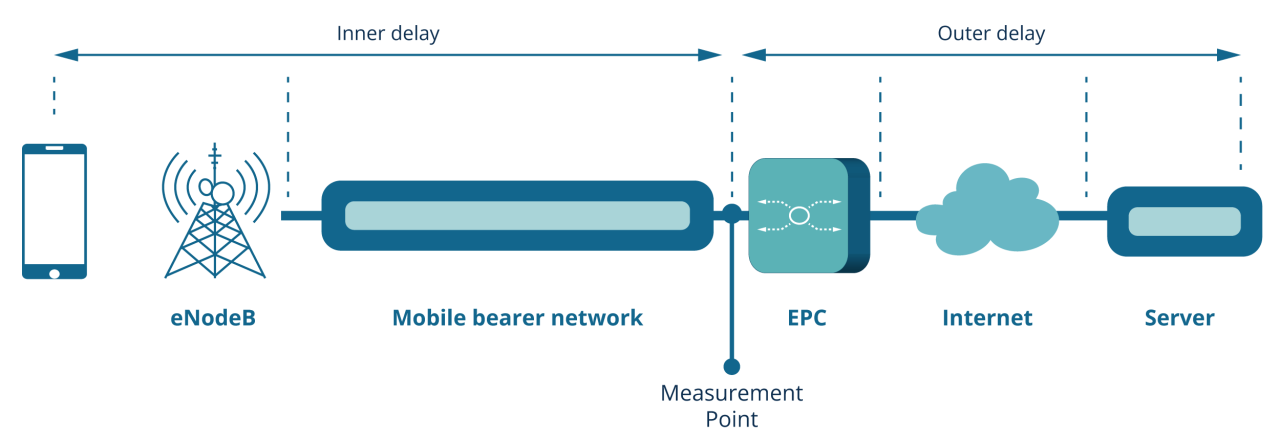
Omnia MA
The result is a more precise assessment of network performance, facilitating improved optimization strategies.
The Challenge of Accurate Service Response Time Measurement
For service provider customers, a big part of satisfaction relies on service response time. Knowing the delay or round-trip information for each subscriber to the services is crucial for improving customer experience. However, service providers often have no control over internet services, which typically is over 70% of the overall delay of the session. A poor session round-trip time can have two root causes: the user side (inner delay) or the application side (outer delay).
Conventional delay measurement approaches always mix inner and outer delay values, resulting in pointless KPIs.
Cubro’s Innovative Inner Round-Trip Time Calculation
Cubro goes the extra mile by conducting an internal round-trip time measurement, precisely calculating the duration required for a data packet to traverse from the service provider network to the end device of the subscriber and back. This innovative mechanism effectively eliminates the impact of the unpredictable service response time associated with the World Wide Web, offering a genuine measure of the inner delay Key Performance Indicator (KPI). This advanced approach ensures a more accurate network performance assessment, contributing to enhanced optimization strategies.

Benefits of Omnia MA Solution
The KPI can be correlated with several other network metrics like eNodeB coverage data and performance values to tell if poor round-trip values of several subscribers are caused by an overloaded base station. The KPI can be grouped by services like speed test tools to evaluate if unhappy customers perform more speed tests when they have poor latency.
- Holistic Network Performance Evaluation: By correlating the KPI with various network metrics, such as eNodeB coverage data and performance values, the solution offers a holistic view of the network.
- Service-Specific Analysis: Grouping the KPI by services, such as speed test tools, provides a service-specific analysis. This can help in understanding user behaviour and preferences under different network conditions.
- Identification of Overloaded Base Stations: The solution enables the identification of potential issues with overloaded base stations. This is crucial for network optimization as it allows operators to address and resolve capacity-related issues that may impact the user experience.
- Customer Experience Management: The ability to correlate KPI with user experience metrics allows for effective customer experience management. Operators can proactively address issues affecting subscribers, leading to improved satisfaction and loyalty.
- Data-Driven Decision Making: The solution empowers operators to make informed, data-driven decisions. By analyzing KPIs alongside other relevant metrics, operators can prioritize network optimization efforts, allocate resources efficiently, and implement targeted improvements.
- Proactive Issue Resolution: With the insights provided by the solution, operators can take proactive measures to resolve issues before they significantly impact subscribers. This contributes to a more stable and reliable network performance.
Products in this Solution
Additional Resources

Our newsletter provides thought leadership content about the industry. It is concise and has interesting content to keep you updated with what’s new at Cubro and in the industry. You can unsubscribe anytime with a single click.
This site is protected by reCAPTCHA and the Google Privacy Policy and Terms of Service apply.













